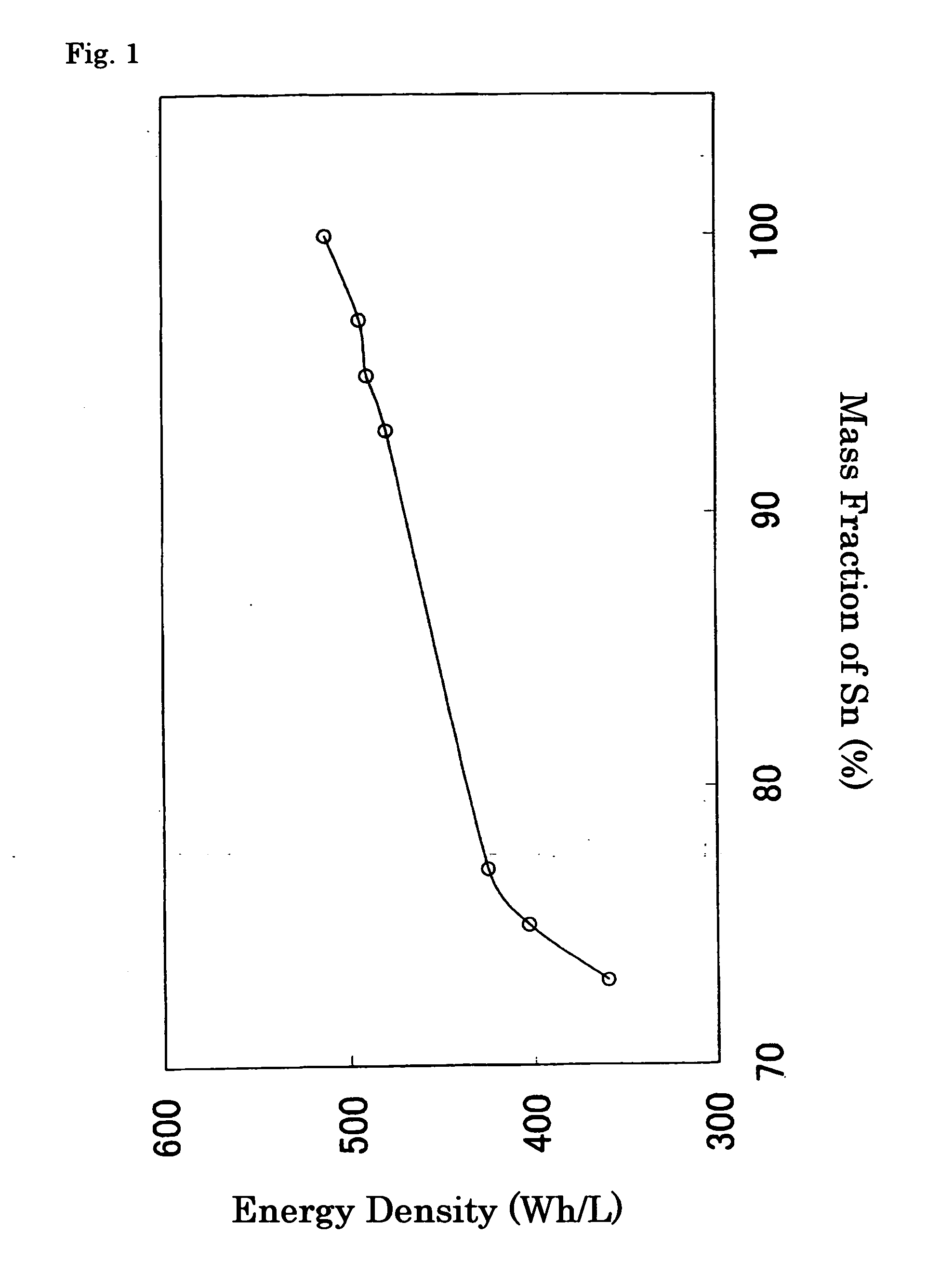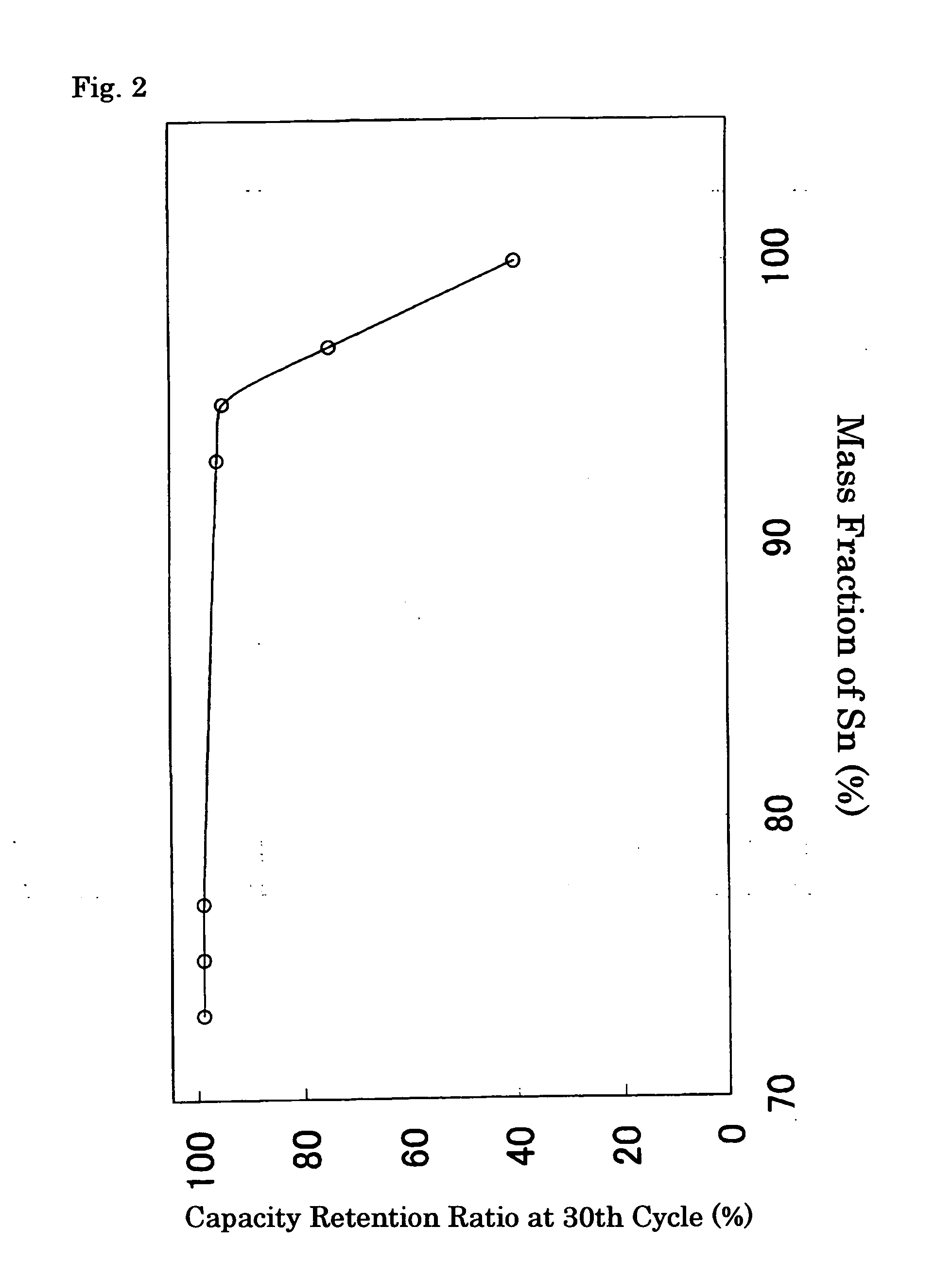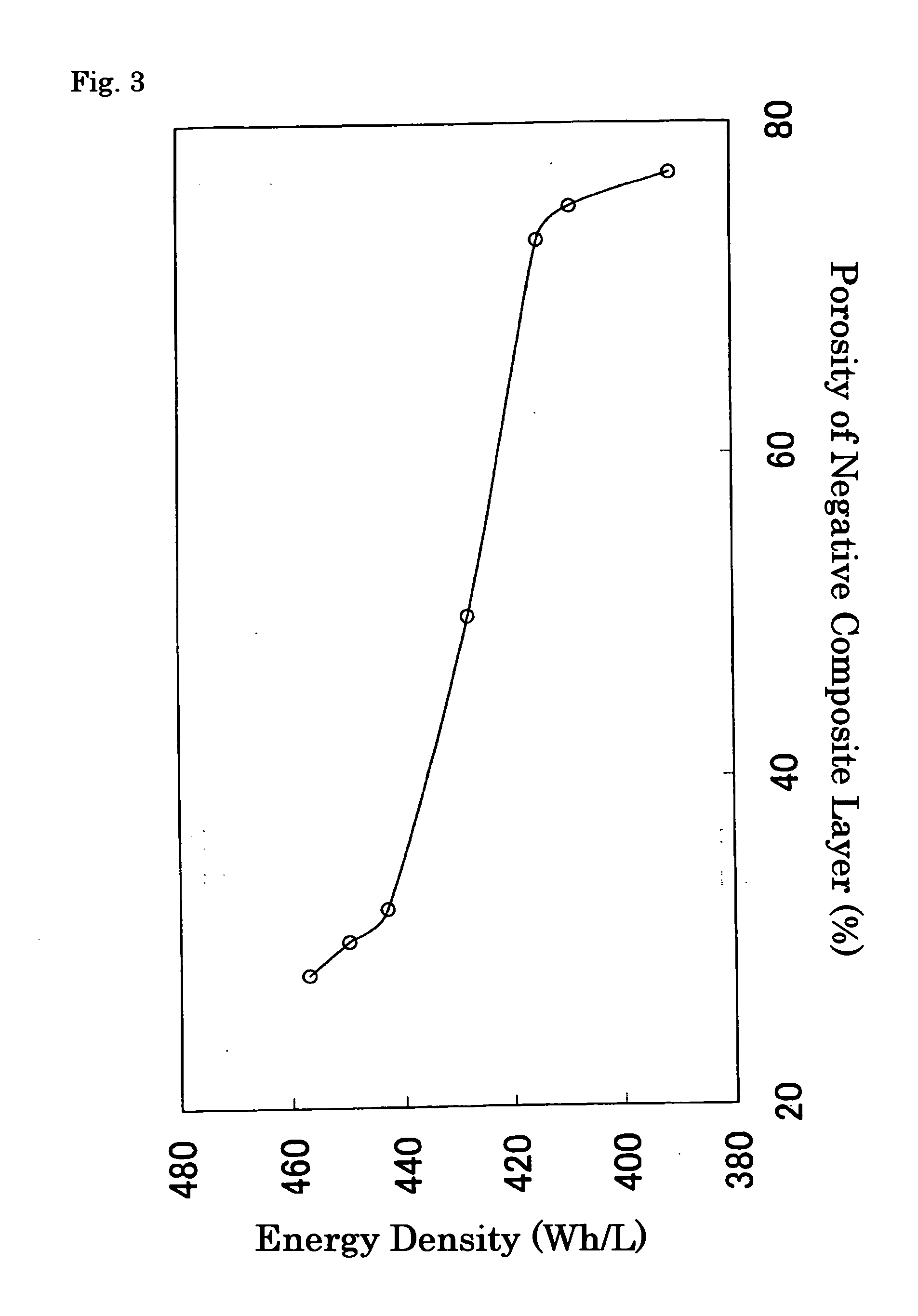Nonaqueous electrolyte secondary cell
a secondary battery and electrolyte technology, applied in the field of non-aqueous electrolyte secondary batteries, can solve the problems of insufficient practical use, poor cycle performance of secondary batteries using these materials as negative electrodes, and change in volume, so as to reduce the manufacturing time and cost of negative electrodes, reduce the swelling of batteries, and reduce the effect of particle size control
- Summary
- Abstract
- Description
- Claims
- Application Information
AI Technical Summary
Benefits of technology
Problems solved by technology
Method used
Image
Examples
embodiment 1
[0059] In this example, Sn powder and Ni powder were weighed out to 95 mass % and 5 mass %, respectively, and preparatively mixed in a mortar. This mixed powder and SUS balls for ball-milling were enclosed in a SUS hermetically-sealed container for the ball-milling under an argon atmosphere. Subsequently, this container was set in a planetary ball mill, the powder inside was milled for 30 minutes, and the obtained powder was dried at 150° C., thereby producing an alloy containing 95 mass % of Sn and 5 mass % of Ni. This alloy was used as the negative active material.
[0060] A paste was mixed and prepared so as to consist of 45 mass % of the powdered negative active material above described, 10 mass % of PVdF as a binder and 45 mass % of N-methyl-2-pyrrolidone (NMP) a applied to both surfaces of Cu foil of 27 mm in width and 10 μm in thickness; the coated foil was dried at 150° C. to evaporate NMP and then pressed to adjust the porosity; and thus the negative electrode was produced. ...
embodiments 2 to 4
[0064] To these examples, alloy compositions shown in Table 1 were applied, where the weighing amounts of Sn powder and Ni powder were varied in the course of the preparation of the negative active material; except for the above, Batteries (B) to (D) of Embodiments 2 to 4 were manufactured in an identical manner to that of Embodiment 1.
embodiment 5
[0078] In this example, Cu foil of 27 mm in width and 14 μm in thickness was immersed in a commercially-manufactured Sn—Ni plating solution (Kojundo Chemical Lab. Co., Ltd., SNS-200E). After that, using the Sn—Ni alloy containing 28 mass % of Ni in the counter electrode, electricity was conducted so that the cathode current density becomes 2 A / dm3, and Sn—Ni alloy was synthesized on the Cu foil. After washed with ion exchange water, this material was dried at 150° C., and thus the negative electrode was prepared. As a result of conducting the quantitative analysis of element, the composition of this Sn—Ni alloy was found to be 85 mass % of Sn and 15 mass % of Ni. In addition, in the X-ray diffraction pattern of this Sn—Ni alloy, the peaks due to CuKα radiation lay at 20=30.30 and 30.60. Except for using this negative electrode, Battery (J) of Embodiment 5 was manufactured in an identical manner to that of Embodiment 1.
PUM
| Property | Measurement | Unit |
|---|---|---|
| porosity | aaaaa | aaaaa |
| temperature | aaaaa | aaaaa |
| apparent density | aaaaa | aaaaa |
Abstract
Description
Claims
Application Information
 Login to View More
Login to View More - R&D
- Intellectual Property
- Life Sciences
- Materials
- Tech Scout
- Unparalleled Data Quality
- Higher Quality Content
- 60% Fewer Hallucinations
Browse by: Latest US Patents, China's latest patents, Technical Efficacy Thesaurus, Application Domain, Technology Topic, Popular Technical Reports.
© 2025 PatSnap. All rights reserved.Legal|Privacy policy|Modern Slavery Act Transparency Statement|Sitemap|About US| Contact US: help@patsnap.com



